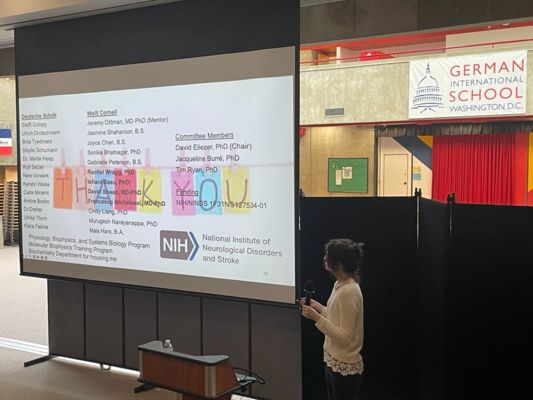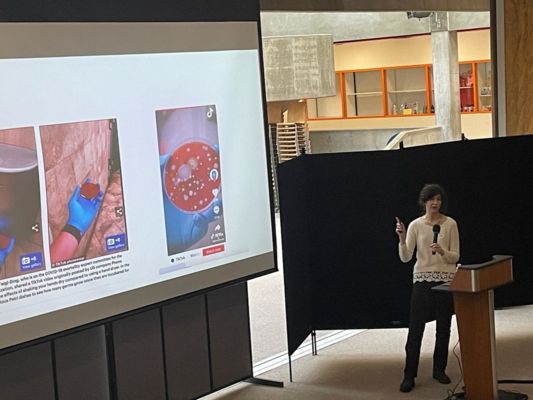Complex Complexin
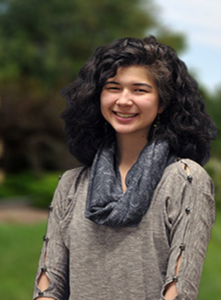
The January event of the MINT series at GISW had a special highlight: a distinguished alumna, Justine Lottermoser, class of ’12, who returned to campus to present a visual walk-through of her research as a doctoral candidate at Weill Cornell Medicine, the New York City campus of Cornell University.
Justine's work focuses on complexin, a small protein involved in exocytosis on neurons. She is looking at how complexin binds to membranes and its importance in determining its function, evolution and localization - as one student paraphrased it, the mechanisms used by proteins to guide them to where they are needed within an organism.
Justine Lottermoser’s sense of humor and her ability to make complex and obscure information vivid and accessible was especially appreciated by the students: for example, she described the relative distance a protein typically travels within a body to facilitate neuro transmission as equivalent to a human journey from the GISW to Beijing.
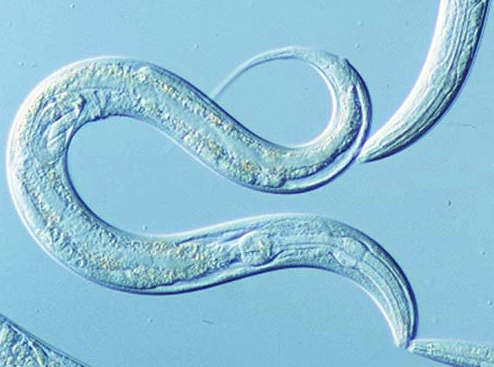
In her experiments, Justine uses C. Elegans, a transparent worm that surprisingly has a neurological signaling system similar to that of humans. She tagged the worm complexin with a fluorescent jellyfish protein to understand how quickly the protein moves between nerve cells.
She explained that the findings on complexin function are part of basic research in neurobiology that could contribute to the discovery of treatment options for various neurological diseases in the future.
As the lecture progressed, students asked questions and drilled down into the specifics of whichever aspect of the presented research intrigued them most. With superb graphics illustrating her descriptions of obscure and, in some cases, recently observed processes, she drew in her intrigued audience, assisting their comprehension and gratifying their enthusiasm.
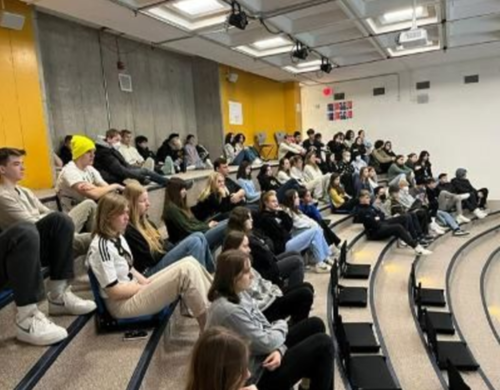
A recurring theme in Justine Lottermoser’s presentation was the idea that, yes, she got her start here with guidance from some inspiring teachers; that there are many discoveries waiting for the students who want to chase very cool concepts that could lead to important scientific discoveries, work such as she is doing; and that a GISW student should think about what an idea interests or excites them and then pursue it. And if the first one fizzles, look for another. In science where there is so much to find out that we don’t yet know, her subtext ran, curiosity is often richly rewarded with discovery.
As the talk concluded, a final slide came on-screen; it featured a list of eleven teachers, some still at GISW, whose effectiveness as educators and whose consistent encouragement, Ms. Lottermoser said, helped spark her career. The enthusiastic applause from the assembled eleventh and twelfth grade students underscored the effectiveness of her multifaceted presentation and the relevance of her well targeted message.
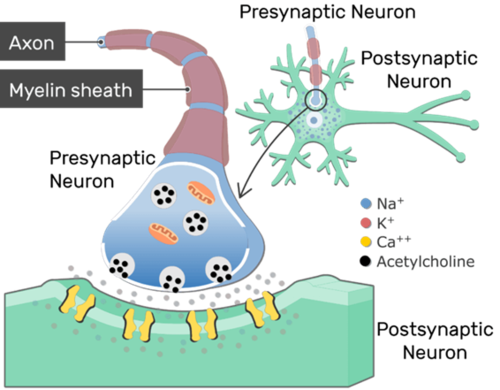
"I really enjoyed getting an insight into the study of biology. Even though it was very complicated in places, Justine explained the subject really well. I especially liked her motivating and inspiring words at the end of the lecture - that you shouldn't give up and should be creative." May P. (11a)
" It was great to get an insight into the life of a current PhD student and find out how training and experiences at GISW have impacted her work. Justine was great. When she visited us after the lecture in the Neuroscience-AG, she didn't take the chair prepared for her at the head of the table but asked to sit 'among the people.' This was followed by an exciting and interesting conversation over food and drinks." Sophie H. (11a)
by Sophie H., May P. (11th grade) and Steffi Colopy (STEM-coordinator)

